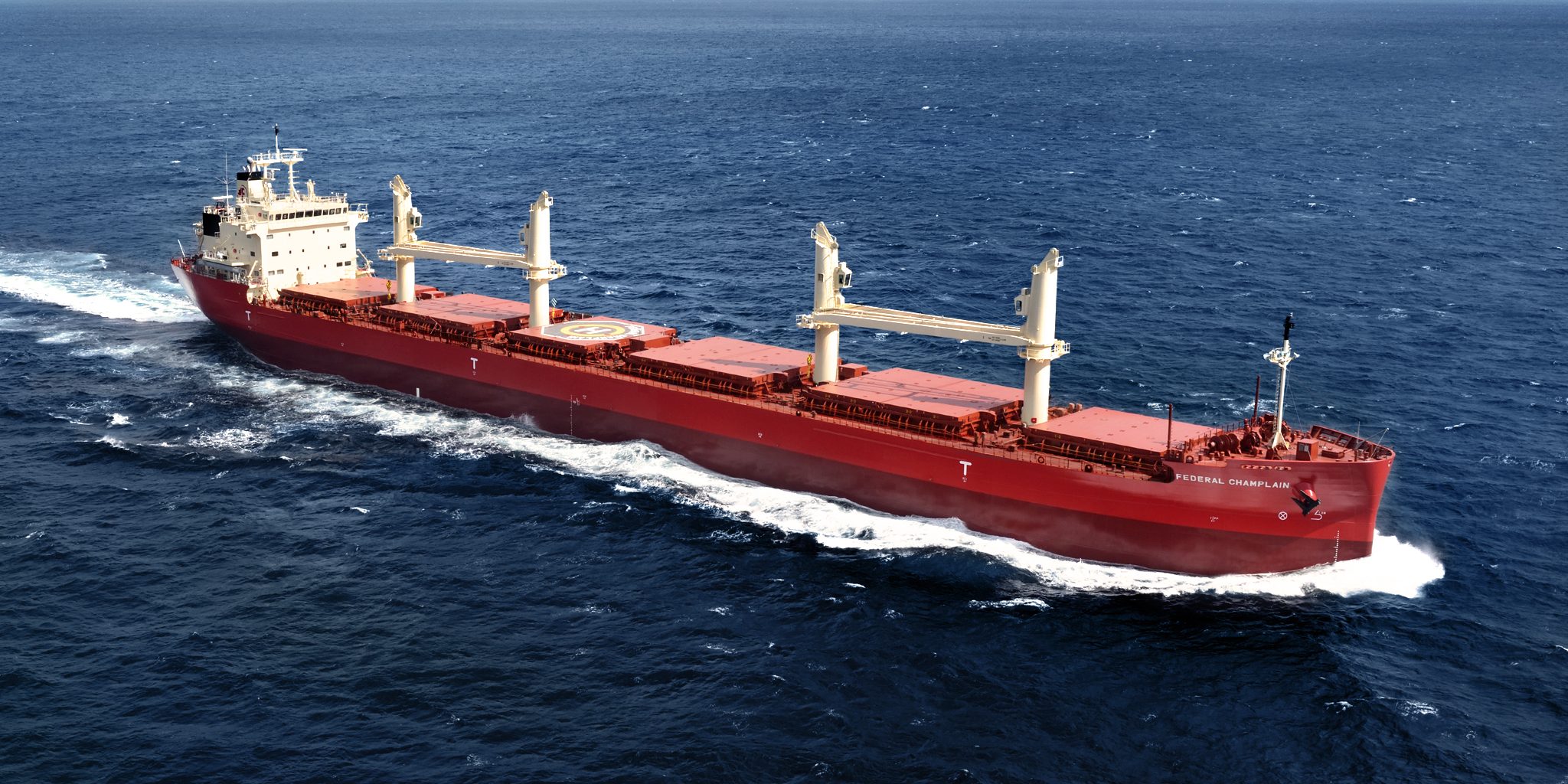New report shows Indiana accounts for over half of U.S. economic activity attributable to Great Lakes shipping
Economic impact of Great Lakes shipping is $35B per year in U.S. and Canada
A new study released by the Great Lakes and St. Lawrence Seaway maritime industry shows Indiana plays a crucial role in cargo shipping on this binational navigation system. Entitled, “Economic Impacts of Maritime Shipping in the Great Lakes St. Lawrence Region,” the study was performed by Martin Associates, a leading economic consulting firm specializing in maritime analysis. The study’s sponsors include the Saint Lawrence Seaway Development Corporation, the St. Lawrence Seaway Management Corporation, the American Great Lakes Ports Association, the Chamber of Marine Commerce, the Lake Carriers’ Association, and the Shipping Federation of Canada.
The Great Lakes St. Lawrence Seaway System is the longest deep-draft waterway in the world spanning 2300 miles from Duluth, Minnesota to the Atlantic Ocean. This commercial waterway serves ports in the eight Great Lakes states and the provinces of Ontario and Quebec. System users include key industries such as steel production, power generation, construction, and agriculture. Located on the south shore of Lake Michigan, the Port of Indiana-Burns Harbor is one of the Great Lakes’ busiest international ports and is beginning a $20 million expansion to double the port’s capacity for handling bulk commodities.
The Great Lakes shoreline spans more than 4,800 miles in the United States, with only 45 miles of that in Indiana. With less than 1% of the shoreline, Indiana accounts for over half of the U.S. economic activity related to shipping on the Great Lakes. Cargo movements on the Great Lakes generated the following economic impacts in Indiana during 2017:
- supported 66,158 jobs (nearly 45% of the total U.S. jobs attributable to Great Lakes shipping)
- created $13.7 billion (USD) in economic activity (53% of U.S. total)
- generated $4.9 billion (USD) in personal income (47% of U.S. total)
The study analyzed the 2017 navigation system and documents that more than 143 million tons of cargo valued at $15.2 billion were moved on the Great Lakes Seaway system. This cargo created the following economic impacts in the binational region:
- supported 237,868 jobs
- created $35 billion (USD) in economic activity ($25.6 billion in U.S. alone)
- generated $14.2 billion (USD) in personal income
- paid $6.2 billion in federal/state/local taxes
The study also analyses the economic impacts of specific navigation infrastructure. The St. Lawrence Seaway consists of a series of canals and 15 navigation locks between Lake Erie and Montreal. This vital waterway connects the Great Lakes to the Atlantic Ocean and enables Great Lakes ports to access global markets. Commerce utilizing the Seaway supported 92,661 jobs in 2017.
Operated by the Army Corps of Engineers, the Soo Locks are located in Sault Ste. Marie, Michigan, and connect Lake Superior to the lower four Great Lakes. Commerce transiting the Soo Locks was responsible for 123,172 jobs in 2017.
To view or download a copy of the report, click here: Full Report and Executive Summary.
About the Port of Indiana-Burns Harbor: This deep-draft port opened in 1970 on Lake Michigan and is operated by Ports of Indiana, a statewide port authority that also operates two ports on the Ohio River. Established in 1961, the Ports of Indiana is a self-funded enterprise dedicated to growing Indiana’s economy by developing and maintaining a world-class port system. Information: portsofindiana.com








